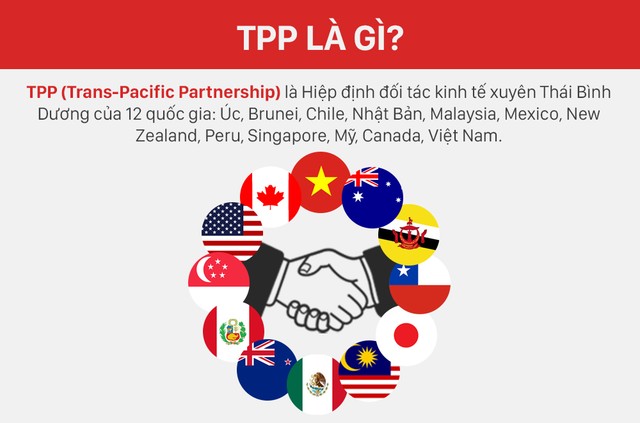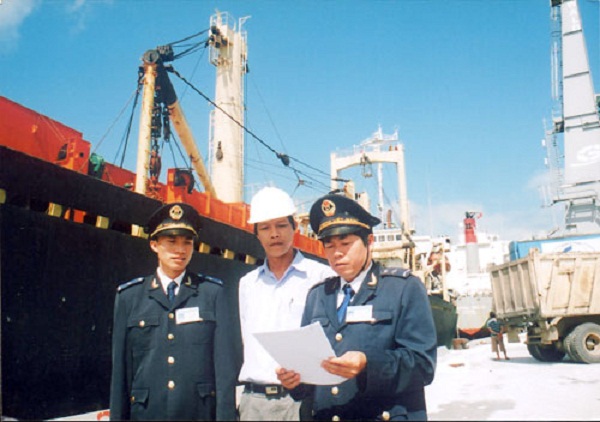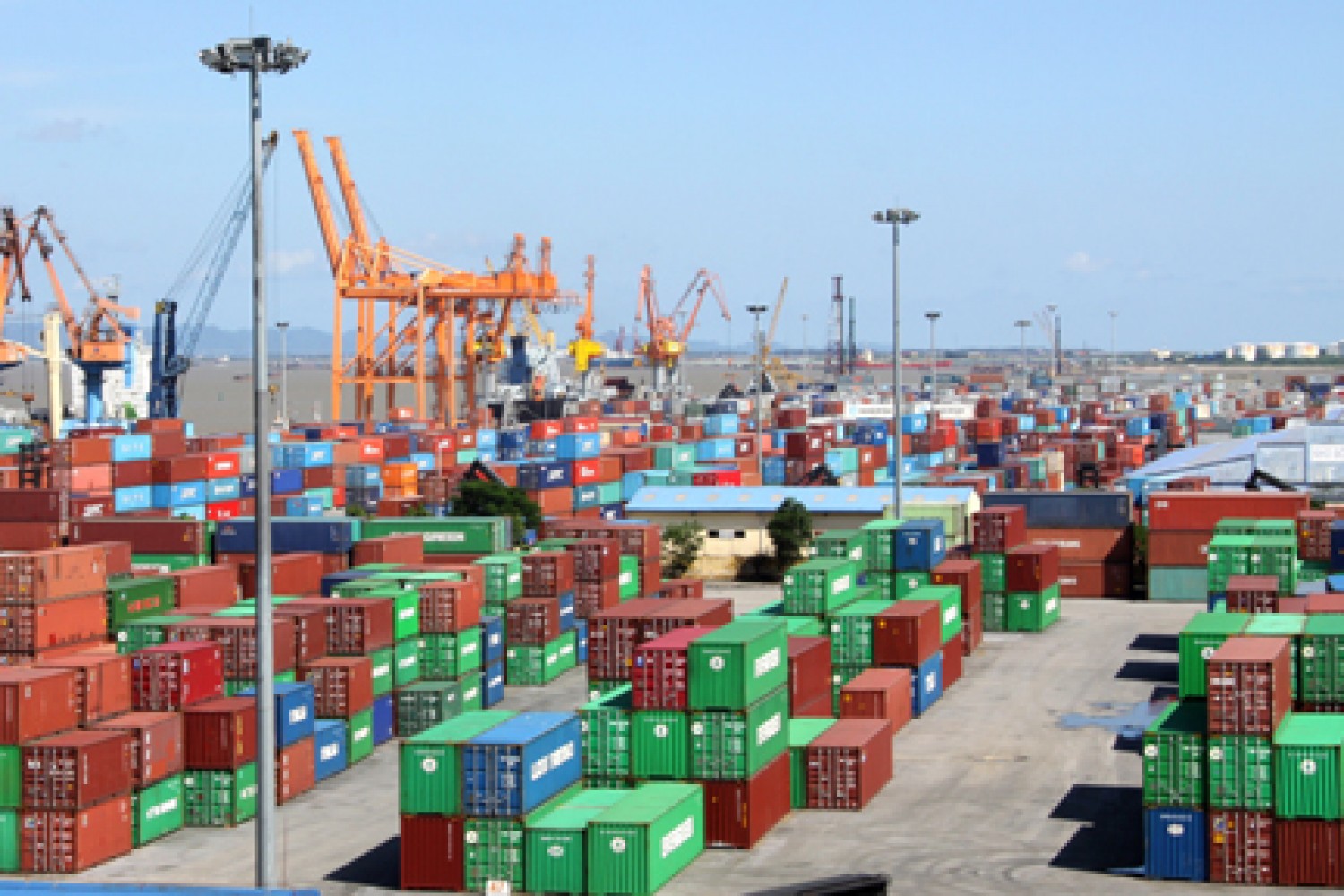TPP - Chapter 06 - Trade Remedies
Chapter 06 of the TPP Agreement stipulates the trade remedies of the parties when participating in the TPP Agreement.
CHAPTER 6
TRADE REMEDIES
Section A: Safeguard Measures
Article 6.1: Definitions
For the purposes of this Section:
domestic industry is, in relation to an imported good, the producers of the like or directly competitive goods operating within the territory of a Party, or the producers producing like or directly competitive goods accounting for a major proportion of the total domestic production of such goods;
serious injury is a significant overall impairment in the position of a domestic industry;
threat of serious injury is the clear and imminent threat of serious injury based on facts and not merely on allegation, conjecture, or remote possibility;
transition period for a particular good is the three-year period from the date of entry into force of this Agreement, except where tariff elimination for that good is over a longer period of time, in which case the transition period is the longer period of tariff elimination for the good; and
transitional safeguard measure is a measure described in Article 6.3.2 (Implementation of Transitional Safeguard Measures).
Article 6.2: Global Safeguard Measures
-
This Agreement does not affect the rights and obligations of the Parties under Article XIX of GATT 1994 and the Safeguards Agreement.
-
Except as provided in paragraph 3, this Agreement does not confer any rights or impose any obligations on the Parties regarding actions taken pursuant to Article XIX of GATT 1994 and the Safeguards Agreement.
-
A Party initiating a safeguard investigation shall provide the other Parties with an electronic copy of the notification to the WTO Committee on Safeguards under Article 12.1(a) of the Safeguards Agreement.
-
No Party shall apply or maintain a safeguard measure provided for in this Chapter on any product imported under a tariff quota issued by that Party pursuant to this Agreement. A Party applying a safeguard measure under Article XIX of GATT 1994 and the Safeguards Agreement may exclude an originating good imported under a tariff quota issued by it pursuant to this Agreement and Appendix A of its Schedule in Annex 2-D (Tariff Elimination) from the safeguard measure, if such imports do not cause or threaten to cause serious injury.
-
No Party shall apply or maintain more than one of the following measures on the same good at the same time:
(a) a transitional safeguard measure under this Chapter;
(b) a safeguard measure under Article XIX of GATT 1994 and the Safeguards Agreement;
(c) a safeguard measure provided for in Appendix B of its Schedule in Annex 2-D (Tariff Elimination); or
(d) an emergency action under Chapter 4 (Textiles and Apparel).
Article 6.3: Implementation of Transitional Safeguard Measures
- A Party may apply a transitional safeguard measure described in paragraph 2 during the transition period, if as a result of the reduction or elimination of a customs duty pursuant to this Agreement, an originating good of another Party is being imported into its territory in such increased quantities and under such conditions as to cause or threaten to cause serious injury to a domestic industry producing a like or directly competitive good; or
(a) the quantity of imports of a good originating from two or more other Parties into its territory increases and causes or threatens to cause serious injury to the domestic industry producing a like or directly competitive good, provided that the Party applying the transitional safeguard measure can demonstrate that, for each Party subject to the transitional safeguard measure, the quantity of imports originating from that Party has increased since the date of entry into force of this Agreement for the Parties.
- If the conditions in paragraph 1 are met, the Party may take such action to the extent necessary to prevent or remedy serious injury and facilitate adjustment, including:
(a) suspending the further reduction of any rate of duty on the good provided for under this Agreement; or
(b) increasing the rate of duty on the good to a level not to exceed the lesser of:
(i) the most-favored-nation (MFN) applied rate of duty in effect at the time the measure is applied; and
(ii) the MFN applied rate of duty in effect on the day immediately preceding the date of entry into force of this Agreement for the Party.
The Parties understand that tariff rate quotas and quantitative restrictions are not permissible forms of transitional safeguard measures.
Article 6.4: Standards for Transitional Safeguard Measures
-
A Party may maintain a transitional safeguard measure only for such period of time as may be necessary to prevent or remedy serious injury and to facilitate adjustment.
-
This period should not exceed two years, and may be extended for an additional period of up to one year if the competent authority of the Party determines that the measure remains necessary to prevent or remedy serious injury and to facilitate adjustment, consistent with the procedures set out in Article 6.5 (Investigation Procedures and Transparency Requirements).
-
No Party shall maintain a transitional safeguard measure beyond the expiration of the transition period.
-
To facilitate adjustment, when the expected duration of a transitional safeguard measure is over one year, the Party applying the measure shall progressively liberalize it at regular intervals over the duration of the measure.
-
Upon the expiration of a transitional safeguard measure, the Party shall apply the duty rate set out in its Schedule of Tariff Commitments in Annex 2-D (Tariff Elimination) as if the measure had never been applied.
-
No Party shall apply a transitional safeguard measure more than once on the same good.
Article 6.5: Investigation Procedures and Transparency Requirements
-
A Party may apply a transitional safeguard measure only following an investigation by the Party's competent authorities in accordance with Article 3 and Article 4.2(c) of the Safeguards Agreement. To this end, Article 3 and Article 4.2(c) of the Safeguards Agreement are incorporated into and made a part of this Agreement, mutatis mutandis.
-
In the investigation referred to in paragraph 1, the Party shall apply the requirements of Article 4.2(a) and Article 4.2(b) of the Safeguards Agreement. To this end, Article 4.2(a) and Article 4.2(b) of the Safeguards Agreement are incorporated into and made a part of this Agreement, mutatis mutandis.
Article 6.6: Notification and Consultation
- A Party shall promptly notify in writing the other Parties of:
(a) initiating an investigation into a transitional safeguard measure under this Chapter;
(b) a finding of serious injury or threat of serious injury caused by increased imports pursuant to Article 6.3 (Implementation of Transitional Safeguard Measures);
(c) a decision to apply or extend a transitional safeguard measure; and
(d) a decision to modify a previously applied transitional safeguard measure.
-
A Party shall provide the other Parties with a copy of the public version of the report by its competent authorities issued pursuant to the requirements set out in Article 6.5.1 (Investigation Procedures and Transparency Requirements).
-
When a Party makes a notification pursuant to paragraph 1(c), the notification shall include:
(a) evidence of serious injury or threat of serious injury caused by the increased imports of an originating good of another Party as a result of the reduction or elimination of a customs duty pursuant to this Agreement;
(b) a precise description of the good subject to the transitional safeguard measure including its HS tariff classification number;
(c) a precise description of the transitional safeguard measure;
(d) the date of application of the transitional safeguard measure, its expected duration (if applicable), and the timetable for the liberalization thereof; and
(e) evidence that the domestic industry is adjusting if the measure is to be extended.
- Upon request of a Party whose good is subject to a transitional safeguard measure under this Chapter, the Party applying the measure shall initiate consultations with the requesting Party to review the notification made under paragraph 1 or any public notice or report issued by the competent authorities in relation to the application of the transitional safeguard measure.
Article 6.7: Compensation
-
After consultations with the Party whose originating good is subject to the transitional safeguard measure, the Party applying the measure shall provide to that Party mutually agreed trade-liberalizing compensation in the form of concessions having substantially equivalent trade effects or equivalent to the value of the additional duties expected to result from the measure. The Party shall provide the compensation no later than 30 days after imposition of the transitional safeguard measure.
-
If the consultations do not result in an agreement on trade-liberalizing compensation within 30 days, the Party whose originating good is subject to the transitional safeguard measure may suspend the application of substantially equivalent concessions under this Agreement to the trade of the Party applying the measure.
-
The Party choosing to suspend the application of substantially equivalent concessions shall notify the Party applying the transitional safeguard measure in writing at least 30 days before the suspension is to take effect.
-
The obligation to provide compensation under paragraph 1 and the right to suspend concessions under paragraph 2 shall terminate upon the termination of the transitional safeguard measure.
Section B: Anti-Dumping and Countervailing Duties
Article 6.8: Anti-Dumping and Countervailing Duties
-
Each Party retains its rights and obligations under Article VI of GATT 1994, the AD Agreement, and the SCM Agreement.
-
This Agreement does not confer any rights or impose any obligations on the Parties with respect to the conduct or imposition of anti-dumping or countervailing duties proceedings or measures under Article VI of GATT 1994, the AD Agreement, or the SCM Agreement.
-
No Party shall invoke dispute settlement under Chapter 28 (Dispute Settlement) for any matter arising under this Section or Annex 6-A (Practices Relating to Anti-Dumping and Countervailing Duty Proceedings).
Article 6-A: Practices Relating to Anti-Dumping and Countervailing Duty Proceedings
The Parties recognize the rights of the Parties to apply trade remedies consistent with Article VI of GATT 1994, the AD Agreement, and the SCM Agreement, and acknowledge the following practices aimed at fostering transparency and due process in trade remedy proceedings:
(a) When the investigating authority of a Party receives a properly documented application for anti-dumping or countervailing duties on imports from another Party, and not later than seven days before initiating an investigation, that Party shall notify the other Party in writing of the receipt of the application.
(b) In any proceeding in which the investigating authority decides to verify information submitted by a respondent and relevant for calculating the dumping margin or the amount of subsidization, the investigating authority shall promptly inform the respondent of its intent, and:
(i) provide the respondent at least 10 working days' notice of the dates during which the investigating authority intends to conduct an on-site verification of the information; and
(ii) no later than five working days before the on-site verification, provide the respondent with a document identifying the topics the responding party should be prepared to address during the verification and describing the types of supporting documentation that will be reviewed; and
(iii) following the completion of the on-site verification, in accordance with the requirements for the protection of confidential information, issue a written report describing the methods and procedures used in verifying the information and the extent to which the information provided was verified, referencing relevant supporting documentation examined during the verification. The report shall be made public to ensure that parties have adequate opportunity to defend their interests.
(c) The investigating authorities of a Party shall maintain a public file for each investigation and review, containing:
(i) all non-confidential documents that are part of the investigative or review record; and
(ii) a public summary of the confidential information contained in the records of each investigation or review, provided that confidentiality is not breached. The investigating authorities may aggregate individual data that is not required to be summarized.
Public files and a list of all documents contained in the investigative or review record shall be available for inspection and copying during the investigating authorities' normal business hours and may be accessible electronically.
(d) In any case where an anti-dumping or countervailing duty measure involving imports from a Party is under investigation, if the investigating authority determines that the response to a request for information is deficient, the investigating authority shall disclose the deficiency to the respondent and provide the respondent with an opportunity to remedy or explain the deficiency within a period of time that allows for the timely completion of the anti-dumping or countervailing duty proceeding. If the respondent submits additional information and the investigating authority finds it still deficient or the information is not submitted within the established time limits, and if the investigating authority disregards all or part of the initial and any subsequent responses, the investigating authority shall explain the reasons for doing so in the determination or other documents.
(e) Before making a final determination, the investigating authority shall inform all interested parties of the essential facts under consideration which form the basis for the determination on whether to apply definitive measures. Subject to the protection of confidential information, the investigating authority may use any reasonable means to disclose the essential facts, including by issuing a summary of data in the records, preliminary determinations, or a combination of reports or determinations, enabling the interested parties to submit comments on the disclosure of essential facts.
1 These practices are not a comprehensive list of all practices related to anti-dumping and countervailing duty proceedings. No inference should be drawn from the inclusion or exclusion of a specific practice in this list.
2 For purposes of this Annex, “respondent” refers to a producer, exporter, importer, a government, or a government authority (if applicable) requested to respond to a questionnaire on anti-dumping or countervailing duties by the investigating authority of a Party.
3 For purposes of this Annex, “confidential information” means information that is provided as confidential and is by nature confidential, for example, disclosure of which would provide a significant competitive advantage to a competitor or have a significantly adverse effect upon the person supplying the information directly or indirectly.
4 Copying costs, if any, shall be limited to the costs of the services rendered.MỤC LỤC
TPP - Chương 02 - Nguyên tắc đối xử quốc gia và việc tiếp cận thị trường hàng hóa
TPP - Chương 05 - Quản lý hải quan và tạo thuận lợi trong thương mại
TPP - Chương 16 - Chính sách cạnh tranh
TPP - Chương 17 - Các doanh nghiệp nhà nước và các đơn vị độc quyền
- Key word:
- trade remedies
- TPP
- TPP Agreement
- Cases of land rent exemption and reduction under the latest regulations in Vietnam
- Economic infrastructure and social infrastructure system in Thu Duc City, Ho Chi Minh City
- Regulations on ordination with foreign elements in religious organizations in Vietnam
- Increase land compensation prices in Vietnam from January 1, 2026
- Determination of land compensation levels for damage during land requisition process in Vietnam
- Who is permitted to purchase social housing according to latest regulations in Vietnam?
-

- TPP - Chapter 01 - General Provisions and Definitions
- 12:10, 11/07/2024
-

- TPP - Chapter 05 - Customs Administration and ...
- 12:10, 11/07/2024
-

- TPP - Chapter 04 - Textile and apparel goods
- 12:10, 11/07/2024
-

- TPP - Chapter 08 - Technical Barriers to Trade
- 12:10, 11/07/2024
-

- TPP - Chapter 07 - Sanitary and Phytosanitary ...
- 12:10, 11/07/2024
-

- Notable new policies of Vietnam effective as of ...
- 16:26, 11/04/2025
-
.Medium.png)
- Notable documents of Vietnam in the previous week ...
- 16:21, 11/04/2025
-
.Medium.png)
- Notable documents of Vietnam in the previous week ...
- 16:11, 02/04/2025
-
.Medium.png)
- Notable new policies of Vietnam to be effective ...
- 16:04, 02/04/2025
-
.Medium.png)
- Notable new policies of Vietnam effective from ...
- 14:51, 21/03/2025
 Article table of contents
Article table of contents
